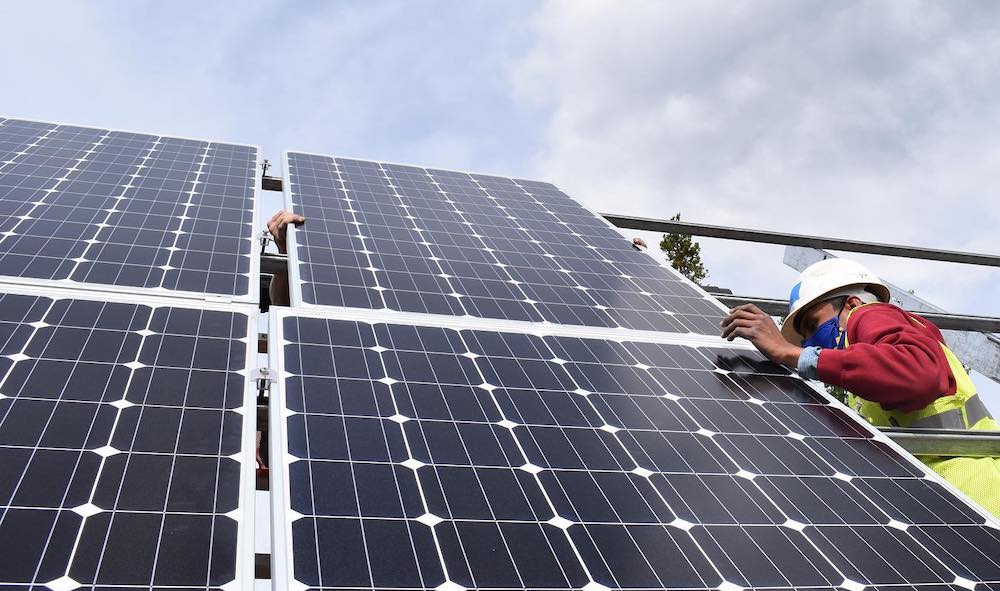
- Details
- By Chez Oxendine
- Energy | Environment
The Midwest Tribal Energy Resources Association (MTERA) has a big job in front of it: deploying $62 million in grant funding to support solar energy projects across 35 tribes in Minnesota, Wisconsin, and Michigan.
The funding stems from the Biden administration’s Solar For All initiative, a $7 billion program aimed at expanding solar access in underserved communities. Between 35 supported tribes and 35 separate electric utility companies serving the region, MTERA has its work cut out for it, according to the nonprofit’s chairman, Daniel Wiggins, Jr., a member of the Bad River Band of Lake Superior Chippewa.
“This program is going to provide visible benefits across our tribal communities,” Wiggins said. “Our tribes are excited to roll up their sleeves to plan, fund, and build Solar For All infrastructure.”
MTERA will work with coalition partners including GRID Alternatives, the Alliance for Tribal Clean Energy, and the Native CDFI Network to deploy tribally owned residential solar, along with storage and upgrades. The work will also include technical assistance, workforce development support, and efforts to seek additional financing.
“We’re excited to do that work,” said Alliance for Tribal Clean Energy President and CEO Cheri Smith. “This is a great opportunity to reach tribes in that area and get these projects underway.”
Wiggins described MTERA’s work as “putting tribes in the driver’s seat for their optimal solar portfolio.”
The goal is to lay the foundation so that each tribe can decide for themselves what best meets their needs.
“We will provide tools and decision making support, but ultimately each tribe will define the specific project concepts on their land,” Wiggins said. “That will be a combination of residential solar, community projects, battery storage, and enabling upgrade projects.”
Smith said that kind of diversity in approach was important when considering an equal diversity in their tribal clientele. Some tribes are ready to begin a solar project immediately, while others have studies to complete, or have yet to engage directly with renewable energy at all.
A multi-group approach such as MTERA, the Alliance, GRID, and others working together through Solar For All should help tribes meet that array of needs, the Alliance’s Smith said.
“MTERA and the Alliance are well-positioned to provide tailored guidance in navigating these complexities. Our approach emphasizes understanding the specific needs of each tribe,” Smith said. “MTERA is looking to the Alliance to leverage our diverse strengths, including deep technical, policy, and workforce expertise, as well as our philanthropic resources.”
The funding will help support what Wiggins called “some of the largest” project deployments in midwestern tribes’ respective territories. For some tribes, that could mean an upgrade to existing project systems. For others, it means breaking ground on their first-ever solar deployments, stepping into an entirely new space, Wiggins said.
“This will further help tribes highlight and help accomplish goals around energy sovereignty and independence for their tribal membership,” Wiggins said. “This will further help tribes highlight and help accomplish goals around energy sovereignty and independence for their tribal membership.”
‘Magic carpet’
The Solar For All Initiative isn’t the only work underway at MTERA. In January, the group partnered with the Grainger Institute for Engineering at the University of Wisconsin-Madison. That partnership, the Clean Energy Community Initiative, works to identify and champion community project proposals.
The partnership’s goal is to pull together community proposals to create an “ecosystem” of co-existing clean energy projects. By working through a shared planning council, the Institute and MTERA hope to support everything from job creation to research and policy advocacy.
Shared council and collective action reflects the organization's wider mission. MTERA brings together 26 member tribes from across three states to advocate for one another and support clean energy transitions, Wiggins said. The organization’s mission is to “empower member tribes to manage their energy resources through collective action,” per MTERA’s website.
In a webinar around their Solar For All plans published last year, an MTERA representative described their process as a “magic carpet.” The organization wants to move tribes from simply paying bills to private utility companies to running tribally-controlled energy sources.
In practice, that means the organization maintains a board of “tribal energy champions” who help govern MTERA’s direction and initiatives.
“In the energy industry, there are areas where tribes working together can unlock more value for all tribes in the region,” the representative said. “That’s what we’re trying to accomplish here.”
In a statement posted to MTERA’s website, Air Quality Specialist for the Mille Lacs Band of Ojibwe Charles Lippert said the organization’s structure let less experienced tribes benefit from those further along.
“Being part of MTERA allows [the Mille Lacs Band of Ojibwe] to network with other Tribes with more energy experience and receive services that strengthen the Tribe’s energy sovereignty,” Lippert said.
Solar For All has provided “an extraordinary moment for tribal communities,” the Alliance’s Smith said, as long as those tribes are prepared to sign on.
“Our coalition's preference is that tribes in the Midwest be served by local, tribally owned solar service providers whenever possible. As you know, there aren't many of these yet,” Smith said. “This is truly a once-in-a-lifetime opportunity to use federal funding to lay the foundation on which we can build (or rebuild) our economies and break free of dependency.”
